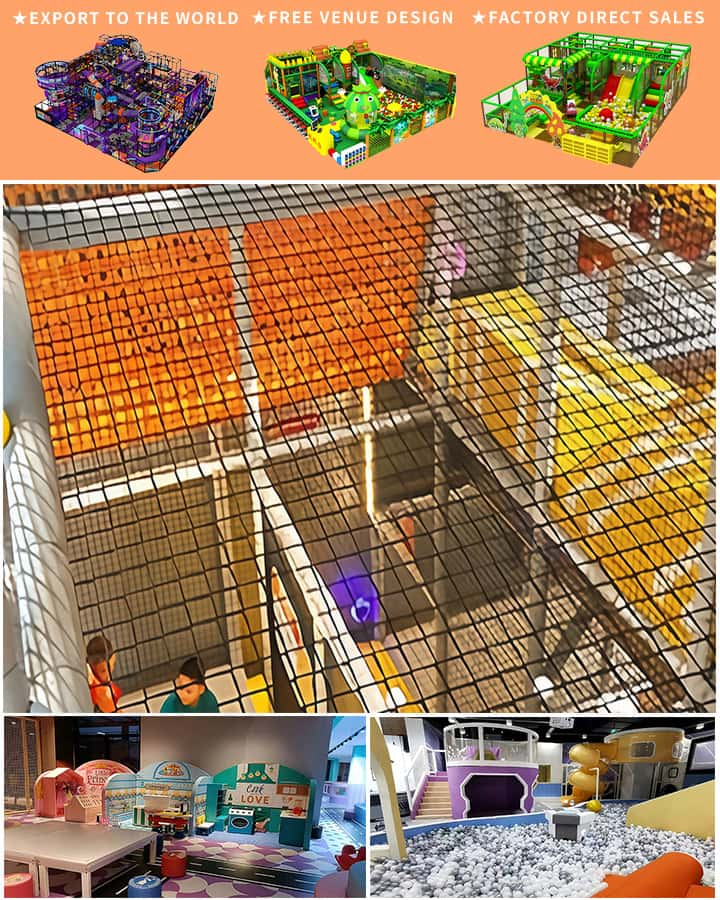Creating an engaging indoor playground for toddlers is a rewarding endeavor that combines creativity, safety, and educational elements. With the right design, an indoor playground can become a haven where young children can learn, explore, and have endless fun while staying safe and stimulated.
Safety First: The Cornerstone of Indoor Playgrounds
Before diving into the creative aspects, it’s crucial to prioritize safety. Toddlers are naturally curious and energetic, which means they are prone to accidents if precautions aren’t taken. Ensure that the flooring is made of soft materials like foam or rubber to cushion falls. Rounded edges on furniture and equipment prevent injuries from sharp corners. Additionally, all play equipment should be age-appropriate, avoiding small parts that could pose choking hazards.
Educational Fun: Learning Through Play
An indoor playground isn’t just about physical activity; it’s also an excellent opportunity for educational enrichment. Incorporate elements that stimulate cognitive development through interactive toys, puzzles, and books. Sensory play areas with different textures, colors, and sounds encourage sensory exploration, aiding in brain development. Wall panels featuring alphabets, numbers, and shapes offer subtle learning moments during playtime.

Imaginative Play Areas
Toddlers thrive on imagination, and an indoor playground provides the perfect setting for creative pretend play. A themed play area, such as a mini grocery store, doctor’s clinic, or fairy-tale castle, can keep kids engaged for hours. Role-playing not only entertains but also helps develop social skills and language abilities. Use child-friendly furniture and props to create an immersive experience. Consider installing a small stage for impromptu puppet shows or musical performances—this adds a touch of excitement and encourages self-expression.
Physical Activity: Keeping It Active
Physical development is equally important, so include various structures that promote climbing, sliding, and jumping. A low-height slide, soft climbing wall, and tunnels provide great exercise and improve motor coordination. Ensure that these elements are securely anchored and appropriately sized for small children to avoid any risk of injury.
Calm Corners for Quiet Time
Not every moment in a toddler’s day should be filled with high energy. A quiet corner equipped with comfortable seating, cushions, and gentle lighting offers a peaceful retreat. Here, kids can engage in quiet activities like reading, drawing, or simply relaxing. This balance between activity and rest is essential for a well-rounded play environment.
Interactive Installations
Modern indoor playgrounds can benefit from technology without compromising the traditional play experience. Interactive installations, such as touch-sensitive screens or sound-responsive play areas, add a layer of interactivity that captivates young minds. These tech elements can teach concepts like cause and effect, enhancing problem-solving skills in a fun way.
Maintenance: Keeping It Clean and Safe
Regular maintenance is key to ensuring the playground remains a safe and enjoyable space. Clean all surfaces daily, especially those that come into contact with hands and feet. Check equipment regularly for wear and tear, and make necessary repairs promptly. An organized and clean environment not only looks appealing but also minimizes risks of illnesses spreading.
Final Thoughts
Designing the ultimate indoor playground for toddlers involves blending safety, education, and fun seamlessly. By considering each element thoughtfully—from safety measures to educational toys, imaginative play areas, and interactive installations—you can create a vibrant space where toddlers are free to explore, learn, and grow. An indoor playground isn’t just a place for play; it’s a foundational space that nurtures young minds and bodies, setting the stage for lifelong learning and joy.




